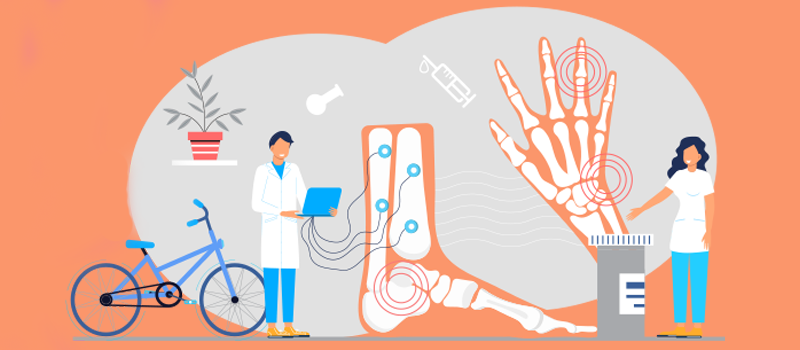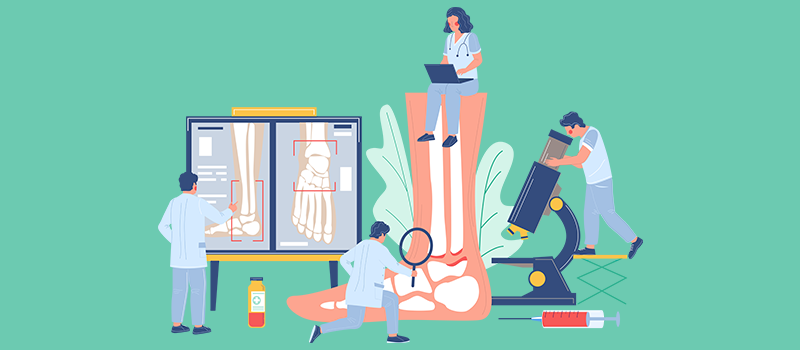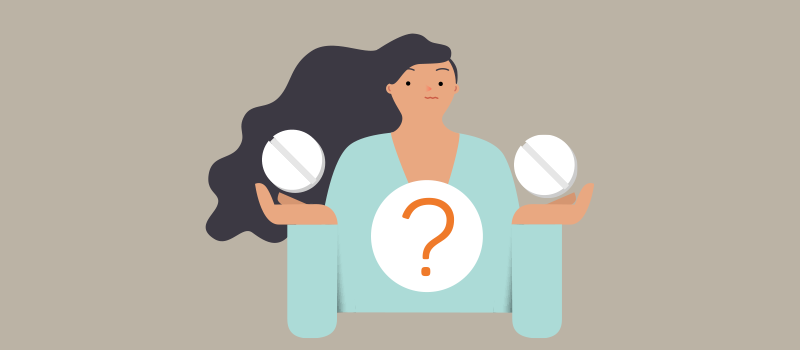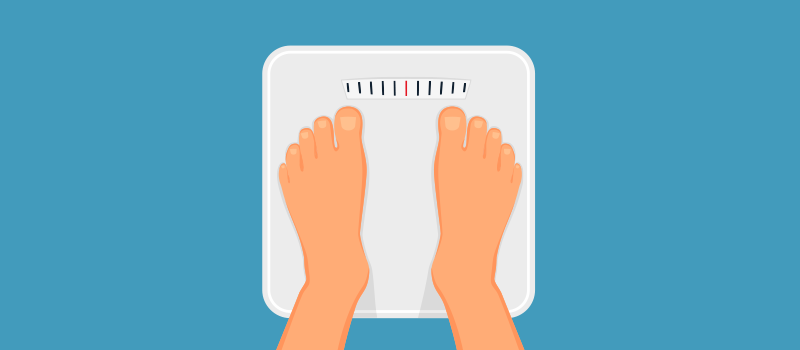What’s the Buzz
The Bee Healthy Blog
Gout vs Rheumatoid Arthritis - What’s the Difference?

Rheumatoid arthritis and gout are both conditions that cause pain, swelling, and joint stiffness; however, they are not the same. The cause of the joint symptoms is very different, as is the treatment. Doctors rely on various clues to differentiate between rheumatoid arthritis (RA) and gout, including the patient’s age, lifestyle factors, symptoms, blood tests, and imaging tests. Once the condition is diagnosed correctly, it can be treated appropriately. Continue reading to learn more about gout and rheumatoid arthritis and how they are different.
What is the difference between rheumatoid arthritis and gout?
Rheumatoid arthritis is an autoimmune disorder, meaning it is a condition in which the body’s immune system mistakenly attacks its own tissues. It is a chronic inflammatory disease characterized by inflammation and pain in the joints. Symptoms usually consist of tender, swollen, warm joints, with stiffness in the morning or after a period of inactivity. Additional symptoms can include fatigue, fever, and loss of appetite. The joint pain associated with rheumatoid arthritis tends to start in the small joints of the hands and feet and is usually symmetrical (present on both sides of the body). RA can later spread to larger joints like the wrists, elbows, knees, ankles, shoulders, and hips as the disease progresses.
Gout is a type of arthritis characterized by sudden, intense joint pain, often in the big toe. Gout can also develop in the fingers, wrists, elbows, and knees. It occurs when uric acid crystals accumulate in a joint, causing intense pain and inflammation. These crystals form in the joints when the levels of uric acid in the blood are high. Certain foods and beverages like red meat, seafood, and alcohol promote high uric acid levels in the body. Gout causes the affected joint to become hot, swollen, red, and tender. This is often described by patients as a hot poker in the joint. Unlike RA, gout symptoms are rarely symmetrical. Gout can affect a different joint with each flare. Fever is also much more likely with gout. Another characteristic of gout is the development of tophi in the joints. Tophi are small, hard lumps that are collections of uric acid.
Which is more painful: gout or rheumatoid arthritis?
As noted, the joint pain associated with gout tends to be intense, especially in the first 4-12 hours after it starts. Once the severe pain subsides, there can be lingering discomfort in the affected joint, lasting several days to weeks. As gout progresses, the pain tends to last longer with each flare and affects more joints. Rheumatoid arthritis pain, on the other hand, is typically worse in the morning and gets better as the day progresses and the person undertakes activities.
Can rheumatoid arthritis be mistaken for gout?
Doctors do not usually have much difficulty telling gout and rheumatoid arthritis apart. This is because attacks of gout are usually clear-cut with dramatic, intense joint pain. This is in contrast to RA where the pain tends to be more insidious in onset.
Besides the symptoms, the patient’s age and gender also provide clues. Rheumatoid arthritis can affect anyone but is much more common in women during their reproductive years. Gout tends to occur in two age groups: late 20’s/early 30s and 70s and 80s, and is more common in men than women.
High uric acid levels in the blood of a patient with symptoms of gout are considered diagnostic of gout. There is no specific blood test for rheumatoid arthritis RA. Doctors check for the presence of certain antibodies like antinuclear antibodies, anti-CCP antibodies, and rheumatoid factor that can point towards a diagnosis of RA. They also check for anemia which is common in patients with rheumatoid arthritis.
Imaging tests like x-rays can help physicians make the diagnosis of RA vs gout. Tophi, a deposit of monosodium urate crystals in the joints, can sometimes be seen on the x-rays. However, the patient’s symptoms, physical examination, and blood uric acid levels are sufficient to make a diagnosis of gout.
What can be mistaken for uric acid collection in gout?
A condition called pseudogout can sometimes be mistaken for gout. This is a condition in which there is deposition of calcium pyrophosphate in the joints (rather than uric acid crystals). Also, septic arthritis is in the differential diagnosis for gout. Septic arthritis is joint pain and inflammation due to an infectious agent in the joint. Doctors can use blood tests and radiographic imaging to make the correct diagnosis.
Treatments
Since both gout and rheumatoid arthritis are different conditions, the treatments for them are also different. There is presently nothing that can cure rheumatoid arthritis, but doctors can prescribe medications for symptom relief. In the early stages of rheumatoid arthritis RA, non-steroid anti-inflammatory drugs and corticosteroid medications are used to reduce pain and inflammation and slow the progression of the disease. In the later stages, doctors use what are called disease-modifying antirheumatic drugs (DMARDs) to give relief from symptoms and prevent damage to the joints. Also, newer drugs called biologic agents are used to target the parts of the immune system that trigger the inflammation and cause joint damage in rheumatoid arthritis.
Treatment for gout consists of nonsteroidal anti-inflammatory drugs as well. Colchicine is an anti-inflammatory drug that is particularly effective against gout pain. Corticosteroids are also used for the treatment of gout pain, both orally and by injection into the affected joint.
Both diseases, gout and rheumatoid arthritis, are treatable with many effective treatments available. If you suspect you have either of these conditions, do not delay seeing a doctor. They will make the correct diagnosis and prescribe the appropriate treatment. Getting evaluated and treated in a timely manner is important to obtain relief of your symptoms and prevent permanent damage to your joints
References:











SOCIAL